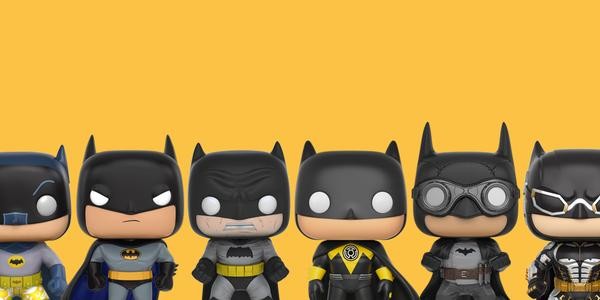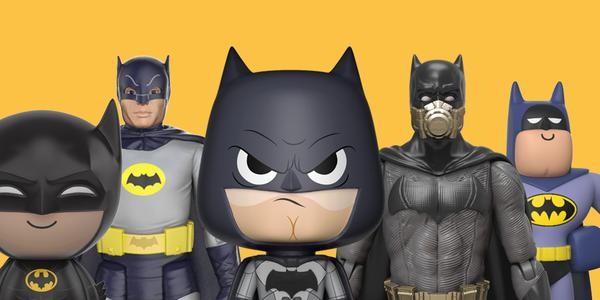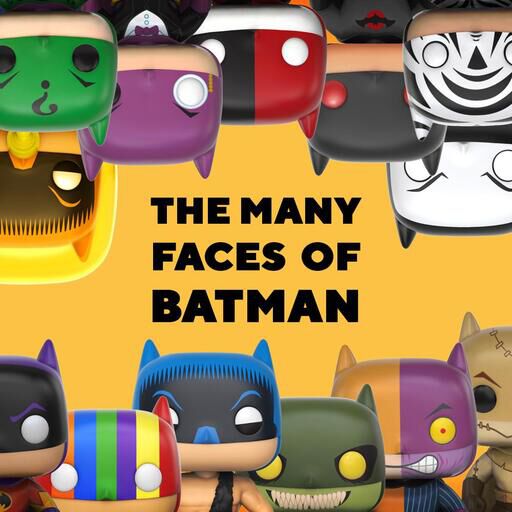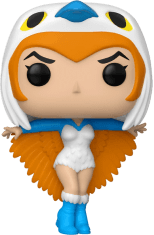
Since his 1939 introduction in DC Comics' Detective Comics #27—originally named Bat-Man—the Dark Knight's personality and style has taken some wild turns from Adam West's surfing Batman to Christian Bale's gruff version that Polygon called “a tortured, noble, super-rich vigilante, who terrified the world's worst villains while clad in para-military gear and growling through his perfect teeth.” When we talk about "Batman" which incarnation are we discussing?
After 79 years of comics, radio dramas, television shows and films, is there a single Batman that exists within the fans' consciousness or do we each possess our very own hybrid Batman surfing through our minds? Consider the first fundamental rule of Batman: He doesn't kill or use guns. Except that once upon a time, the caped crusader did both. A lot.
The very first story in Detective Comics #27, titled “The Case of the Chemical Syndicate” featured a Batman who showed little to no remorse maiming and killing criminals. In fact, when Batman knocked villain Alfred Stryker into a vat of acid, the Dark Knight called it “a fitting end for his kind.” The following issue, he threw a henchman off a building. In Detective Comics #29, Batman broke Jabah's neck, which he repeated with Mikhail the following issue.
In the spring of 1940, DC Comics launched Batman, a spinoff series focusing on the Dark Knight and his sidekick, Robin the Boy Wonder. In that issue, Batman used machine guns against his enemies, acknowledging, “As much as I hate to take human life, I'm afraid this time it's necessary.” After the very first issue of the spinoff series, editor Whitney Ellsworth made a rule that Batman could no longer use guns and soon after that, he wasn't allowed to kill anymore either.
Kevin Conroy who provided Batman's voice for Batman: The Animated Series argued that regardless of the motive, the caped crusader's refusal to kill was enormously beneficial to the brand.

“That was something they established early on and it ended up benefiting them so enormously because years later they realized, ‘Wait a minute, we have this rogue gallery of crazy villains and they're all in Arkham Asylum. Let's get ‘em! Let's get them out of there and let's open it up.' And then you had the whole Arkham series of games that they were able to do out of that,” Conroy explained to Den of Geek.
There is something to be said for having an endless supply of epic baddies for Batman to go toe to toe with again and again and again once more. But the reality is that once upon a time, Batman was a killer. In a 2016 article titled “Twilight of the Superheroes” The Atlantic argued that “the increasing darkness of Superman, Batman, and their brethren are indicators of the American public's anxiety.”
“Our superheroes have lost all interest in being heroic,” the article stated. “In the name of brand consistency, they've lived long enough to resemble villains.” Whether that's true of the other superheroes discussed in the article is debatable but even in his darker, tortured moments, the modern Batman is worlds apart from the machine gun wielding, neck snapping superhero that first emerged from the pages of Detective Comics and Batman's history is too riddled with inconsistencies to make an argument for a single universal vision of the caped crusader. After 79 years in the public eye, characters are bound to experience some evolution, perhaps even more so for characters upheld as role models and therefore subject to the court of public opinion and outrage.
The subject of how we perceive Batman is particularly relevant right now as Warner Bros. is in the process of casting a new Batman—the ninth Dark Crusader to grace the silver screen since Lewis Wilson first assumed the role for the 1943 Batman. Robert Lowry, Adam West, Michael Keaton, Val Kilmer, George Clooney, Christian Bale and Ben Affleck have all worn the suit although the costume, like the character, has undeniably evolved over the decades.
Adam West wore a gray fabric suit that matched his hero's campy tone. Michael Keaton's Batman wore a galvanized rubber armor suit that emphasized Bruce Wayne's all-too human frailty. Val Kilmer and George Clooney's Batman of Batman Forever and Batman & Robin famously had nipples. Polygon describes Christian Bale's suit in The Dark Knight as “semi-realistic military-grade armor … with its chainmail-meets-Kevlar look.” The Batman who makes occasional appearances in Teen Titans Go! is a return to the sillier retro Batman of yesteryear, hosting sleepovers with the Joker and Commissioner Gordon and wearing a predominantly gray suit.

While speculation currently indicates that Game of Thrones' Kit Harrington is the frontrunner for director Matt Reeve's The Batman, no one has any idea how this version of Batman will look or sound. Like the batsuit, Batman's voice has changed over the years. Kevin Conroy might have the most iconic Batman voice after providing the voice for Batman: The Animated Series, which ran for two seasons and 85 episodes. But Christian Bale's husky growl might be the most memorable, having spawned countless memes and even a YouTube video of Conroy critiquing Bale's Batman voice at The Chicago Comic & Entertainment Expo (C2E2).
“Look, Christian Bale is a damn good actor. He's an excellent actor,” Conroy insisted. “He just got steered wrong. Obviously, someone should have stopped him and said, 'you sound ridiculous' … as actors, you kind of have to trust the people on the other side of the camera because you can't see what's going on … you need a third eye to tell you when you're way off base and unfortunately no one stopped him.”
Despite inconsistencies in his appearance, personality and voice, Batman looms large in the minds of comic book and superhero fans. In 2015, FanSided released a list of the “50 Greatest Super Heroes in Comic Book History” and Batman was ranked first. Superman followed in second place, Spider-Man just made the podium in third, Wonder Woman was fifth and Robin was ranked twelfth due to his role as “Batman's connection to his humanity.” In their write-up explaining the decision, FanSided acknowledged that Batman was neither the first modern super hero nor the strongest. Rather, it was Batman's humanity and the decisions he was forced to make that distinguished him.
“Batman is a man—just a man—who was created out of the evil men do. He didn't seek revenge or retribution. He didn't repeat the sins of the people who wronged him. Instead, Bruce Wayne devoted his life to fulfilling the complete potential of a human being in hopes of preventing the same tragedy befalling anyone else.”
However Batman ranks on your list of favorite superheroes—and we've all got a list—there's no denying that he's played a major role in shaping public perception of superheroes. Whether your Batman is the original superhero armed with guns and few moral limitations, Adam West's surfing goofball, Kevin Conroy's beloved classic, Christian Bale's growling and emotionally tortured Dark Knight or Will Arnett's parody of a macho and utterly humorless hero, Gotham's caped crusader holds an undeniable appeal that is sure to endure for at least another 89 years.
Perhaps Christian Bale's Batman said it best: “As a man, I'm flesh and blood. I can be ignored, I can be destroyed. But as a symbol … as a symbol I can be incorruptible. I can be everlasting.”







 Items in your cart may be affected with updated location.
Items in your cart may be affected with updated location.




































